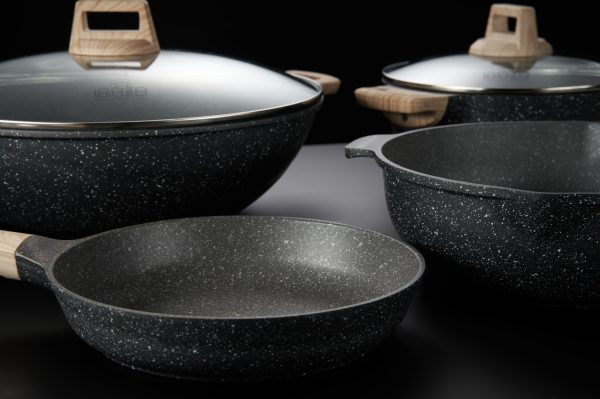Embarking on a culinary journey from your kitchen can be both exciting and intimidating, especially for beginners. Fear not! This beginner’s guide navigates through the world of cookware, helping you select tools to kickstart your culinary adventures. Whether you’re eyeing cast iron skillets, stainless steel pots, or non-stick pans, we’ve got you covered. Let’s dive in and discover the perfect cookware to elevate your home cooking experience.
Aluminum Cookware
Aluminum cookware stands out for its versatility, blending affordability with durability and safety. Its lightweight nature belies its robustness, ensuring longevity in your kitchen. As an exceptional heat conductor, aluminum swiftly and evenly distributes warmth, expediting cooking processes and locking in flavors. It’s compatible with all stove types, from gas to induction, and demands minimal oil for cooking, promoting healthier culinary practices.
Concerns arise with prolonged contact with acidic or alkaline foods, potentially causing discoloration. Anodized aluminum pans eliminate these concerns but come with a slightly higher price tag, offering a worthwhile investment for culinary excellence.
Cast Iron Cookware
Revered for its dense, heavy construction and unparalleled heat conductivity, cast iron is a kitchen staple. Seasoned with oil or fat, it develops a natural non-stick surface, ideal for a myriad of culinary creations. With proper care, including gradual heating and avoiding soap during cleaning, cast iron pans can endure for generations. Beyond stovetop cooking, they retain heat admirably, transitioning seamlessly to the oven for various techniques.

Non-stick Cookware
Prized for its versatility and ease of use in modern kitchens, non-stick cookware is ideal for delicate dishes like omelettes and fish. Its slick surface ensures effortless food release without excessive oil, and cleanup is simple with residues sliding off effortlessly. Many pieces are dishwasher-safe, but careful treatment is necessary to avoid scratching or damaging the non-stick coating, ensuring longevity and continued performance.

Ceramic & Glass Cookware
Ceramic and glass cookware offer uniform heating surfaces, dispersing warmth efficiently for various recipes. Ceramic excels in baking tasks, while glass pans are ideal for roasting and baking, accommodating sautéing and braising as well. Both types require gentle handling to prevent damage to their surfaces, avoiding the use of metal utensils.
Stainless Steel Cookware
Stainless steel stands out for durability and reliability, featuring multiple layers with an aluminum or copper core for swift and uniform heat dispersion. Long-lasting and versatile, stainless steel pans are compatible with gas, electric, and induction stoves, equipped with lids for added convenience.

Conclusion
Choosing the right cookware is crucial for culinary success. Whether cast iron, non-stick, ceramic, glass, or stainless steel, each type offers unique benefits to suit your cooking style. Understanding their characteristics and uses empowers you to select the best options for your kitchen.




